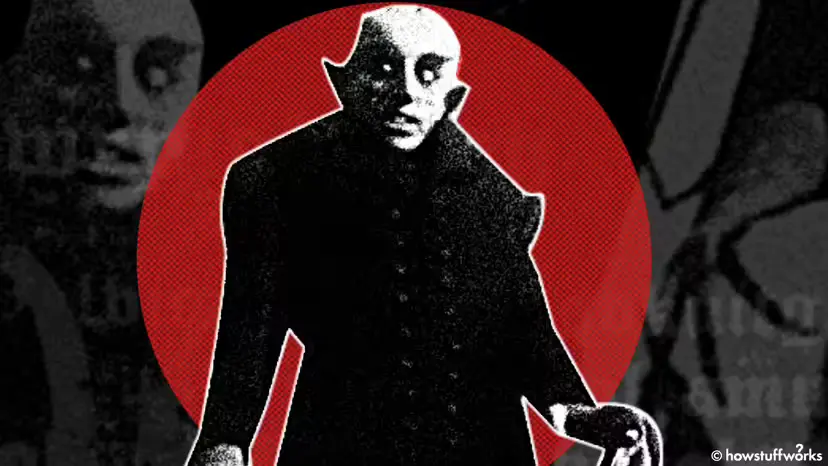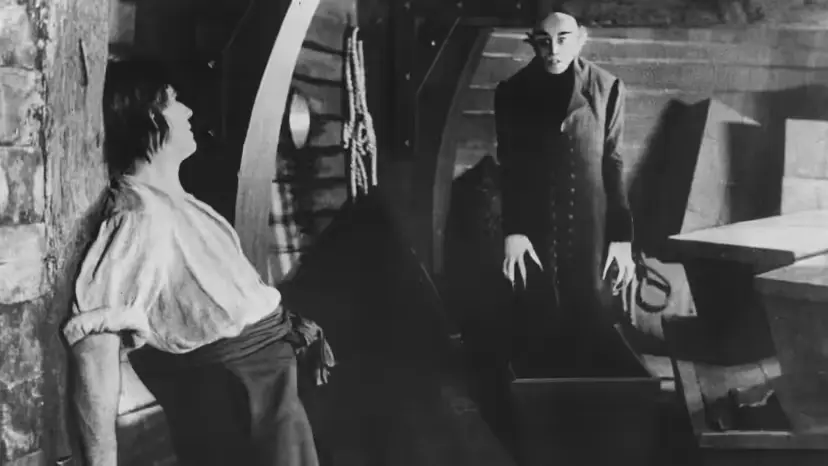
Lucy Westenra's unfortunate existence continued even after she passed away. She was a character in Bram Stoker's novel "Dracula," which was published in 1897, and she was killed by the book's aristocratic antagonist. Lucy's life was slowly sucked out of her as Count Dracula of Transylvania took her blood night after night. He was responsible for her death.
However, that was just the beginning of it. Because the young woman's murderer also turned her into a vampire like himself, she is now considered an undead creature.
At the cemetery, a momentary state of absolute dread prevailed. After then, Lucy's live fiance Arthur and his pals discovered her awake outside her tomb. Among them was the vampire expert Dr. Abraham Van Helsing. After her failed attempt to lull Arthur into a lover's embrace, she was ultimately and irreparably destroyed.
Dr. Van Helsing said that if Arthur had accepted her "kiss," the sad suitor would have "become a nosferatu, as they call it in Eastern Europe."
"The nosferatu do not die like the bee when he sting once," Van Helsing stated afterwards (in the good doctor's terrible English). "He is only getting stronger, and by being stronger, he has even more power to cause harm."
In his novel "Dracula," Bram Stoker uses the word "nosferatu" interchangeably with the word "vampire." Over the next 123 years, several horror authors followed his lead, and even an episode of "The Simpsons" called "Treehouse of Terror IV" in 1993 utilised the two phrases interchangeably.
Stoker, much like Van Helsing, was under the impression that "nosferatu" was a genuine term with an Eastern European root. But the data points to a different conclusion. The word "Nosferatu" is most likely an incorrect translation of a Romanian or Greek term that academics have not been able to pin down.
Regardless of where the term "nosferatu" originated, the horror media gave it a new connotation. It also served as a ready-made source of potential titles for some of the most terrifying vampire legends that have ever emerged from the shadows.
Travelling Terror
Emily Gerard, a travel writer, began writing about vampires long before Bram Stoker's "Dracula" was published. She was an author and literary critic who was born in Scotland in 1849. Her birth year was 1849. However, her nonfiction writings on European folklore are what history remembers her for the most. The following passage can be found in Gerard's essay titled "Transylvanian Superstitions" from 1885:
"More undeniably wicked, on the other hand, is the vampire, or nosferatu, in whom every rural Romanian peasant believes as firmly as he does in heaven or hell,"
The issue is that "nosferatu" was never ever a word in any language. Not in Romanian, and not in any other language or dialect spoken in Eastern Europe that is known. It's possible that Gerard messed up the Romanian word "nesuferit," which literally translates to "unbearable." There is also the possibility that she misunderstood (and misspelt) the Romanian word "necuratul," which translates to "devil." There's also the possibility that Gerard was thinking of the Greek word "nosorophos," which literally translates to "plague-carrier."
The same error can be found in "Torturing Spirits in Romanian Popular Belief," a travel article written in the 19th century and credited to Heinrich von Wlislocki. The "Nosferat," who the author describes as "the most dangerous torturing spirit of Romanian folklore," makes an appearance in the narrative. This does not demonstrate that he was ever exposed to this idea while he was working in the field. It's possible that Wlislocki took the word "Nosferat" from Gerard's writings and used it himself.
Related link : Who Owns the Copyright: Artificial Intelligence or the Artist?
Bram Stoker seemingly did. The majority of horror historians believe that Bram Stoker was first exposed to the term "nosferatu" in Gerard's essay and her book "The Land Beyond the Forest: Facts, Figures and Fancies from Transylvania" which was published in 1888.
However, "nosferatu" is only mentioned twice throughout the entirety of the "Dracula" novel. It wasn't until one of Germany's most peculiar film studios got involved that the trend truly started to take up in the mainstream.
Copyrights are a Nightmare and Other Things
The folks at Prana Film just couldn't control themselves. This fledgling studio in Germany was drawn to all things mystical and spooky when it was founded by Albin Grau and Enrico Dieckmann. The studio is situated in Germany. At the beginning of the 1920s, Prana made the decision to adapt "Dracula" for the movie screen. What came next was an absolute masterpiece in the horror genre, but it was also a legal nightmare.
Writer and avid follower of the horror genre Jonathan Bailey. On his website, which is titled "Plagiarism Today," he has created an article in which he discusses the unexpectedly long history of copyright concerns in monster films.
~In Nosferatu The Vampyre, Werner Herzog Made Dracula A Spiritual Blight~ https://t.co/wbR4j7fqLw
— Snooper-Scope (@Snooper_Scope) October 22, 2022
"Nosferatu the Vampyre" brought a dose of post-war existentialism to the Dracula myth. On the one hand, Kinski's Count Dracula, here restored to his rightful n... pic.twitter.com/05dc1US9wI
"Prana Film wished to create an expressionistic rendition of the Dracula story. Bailey states in an email that this was one of the primary goals from the very beginning. "However, the estate of Bram Stoker, which in this case refers to his widow Florence Stoker, did not wish to sell them the rights. They did not give up on the concept, but rather modified the title and a few other aspects in order to present it as a "original" piece of art.
In an article published on the internet in 2011, Bailey discussed the changes. To call the majority of them "superficial" would be giving them too much credit. The vampire in Prana's script is still an aristocrat with a creepy castle who goes across the sea and causes havoc in a new city. He does this by raising hell in the new location. On this side of the wall, though, people call him "Count Orlok" rather than "Count Dracula."
Prana Film discarded the book's title in an effort to conceal its tracks even more thoroughly. Their substitute of choice was "Nosferatu, a Symphony of Horror." Nowadays, people may also refer to it by the name "Nosferatu."
The copyright of "literary and artistic works" had already been protected according to an international agreement that Germany had already entered into. Whether or not they were aware of it, the team at Prana broke the law when they maintained Bram Stoker's core plot more or less in its entirety. This put them in violation of the law.
According to Bailey, "Film was a VERY new medium at the time, especially from a commercial standpoint."
"Whenever a new creative technology emerges, copyright is typically one of the last things to garner serious thought.... Even if filmmakers were aware of the fundamentals of copyright law, it is highly unlikely that they were familiar with its subtleties. After all, they are directors of films, not solicitors. "This is something that continues to hold a lot of truth in the modern day," Bailey explains to us.
From "Nosferatu" through "NOS4A2"
"Nosferatu" was released by Prana Film on March 4, 1922, and its premiere took place in the Berlin Zoological Gardens, of all places. Audiences and the majority of critics agreed that Max Schreck's performance as the really unsettling Count Orlok earned the film high praise.
The vast majority of critics, with the exception of Florence Stoker.
A German attorney who had been retained by the British Incorporated Society of Authors to work on her behalf attempted to collect compensation from Prana. The fact that they had stolen material from "Dracula" was without reasonable question. However, by the time the attorney showed up, the studio had already gone bankrupt due to the enormous amount of money that was wasted on the "Nosferatu" promotion. As a result, in order to carry out Stoker's desires, a court in Germany ruled that every single copy of the movie must be obliterated.
Florence Stoker put out a valiant effort, but she was unable to put an end to "Nosferatu." Man, did she try! One print made in the United States managed to survive the destruction campaign. The masterpiece that was produced by Prana Film is now in the public domain; it has been reissued on numerous DVDs, and it can be viewed for free on online platforms such as YouTube.

It's possible that "Nosferatu" ended up being beneficial to the franchise it stole from. In 1924, the widow of Bram Stoker gave her approval for a new theatrical play adaption of the novel "Dracula." A young Hungarian actor by the name of Bela Lugosi played the role of the leading guy in the Broadway show.
He would later reprise the part for the 1931 version of the iconic (and legal) "Dracula" film produced by Universal Pictures. Parallel to the production of the English-language version, Universal also produced a Spanish-language version with different performers on the same sets. Since that time, Count Dracula has become a fan favourite in Hollywood.
As for that eerie film titled "Prana," Werner Herzog's "Nosferatu the Vampyre" (1979) was a prominent reimagining of it. The following year, in 2013, Joe Hill published his novel "NOS4A2." Joe Hill is the pen name of Joseph King, Stephen King's son. A television adaptation that was presented in a serial format aired on AMC for two seasons in 2019 and 2020.
The conclusion is as follows. It is unknown where the word "Nosferatu" first arose; nonetheless, it is known that it was used in a revolutionary horror novel, was involved in some legal drama, altered the course of film history, and was the source of a witty joke from a member of the King family. Emily Gerard was completely unaware of the situation she had created.

